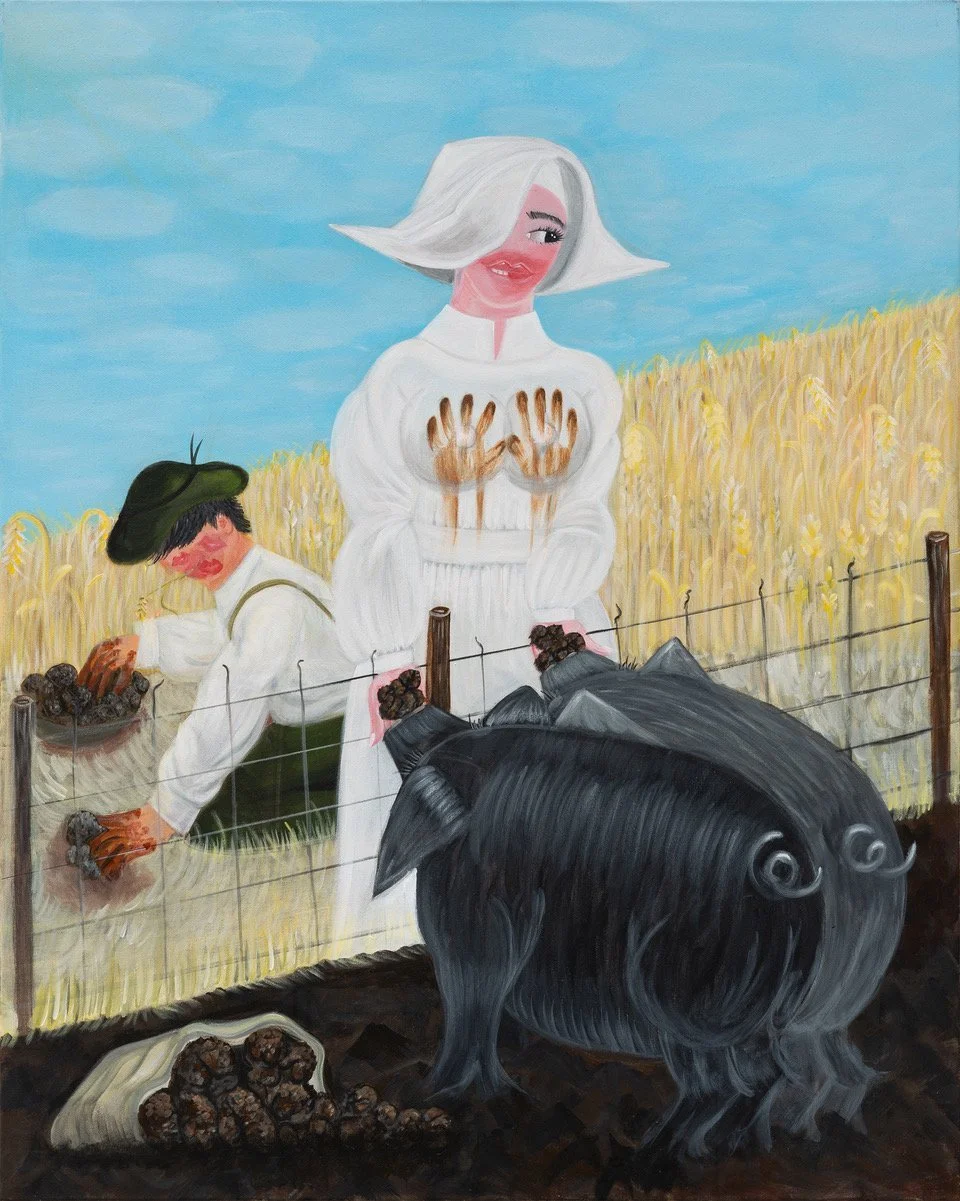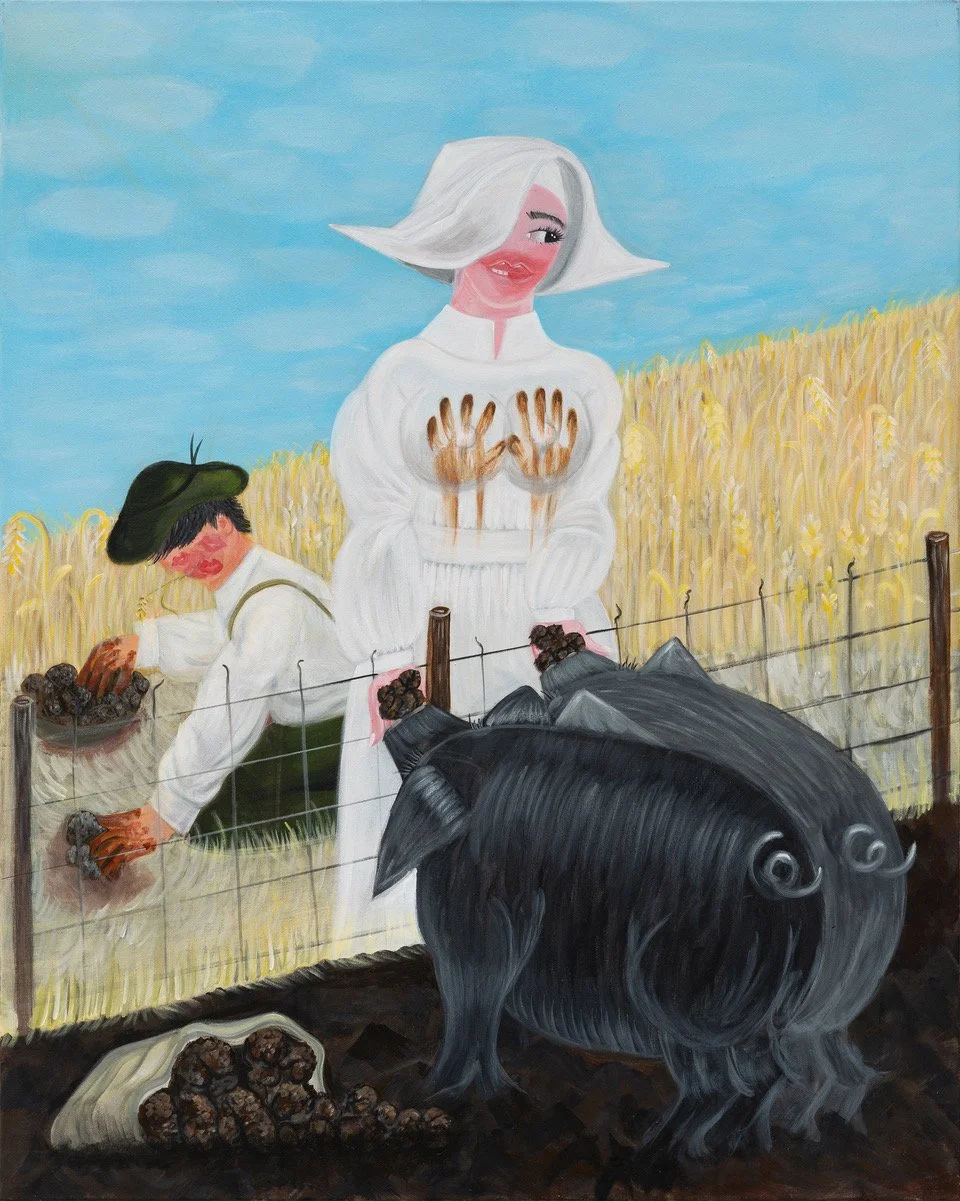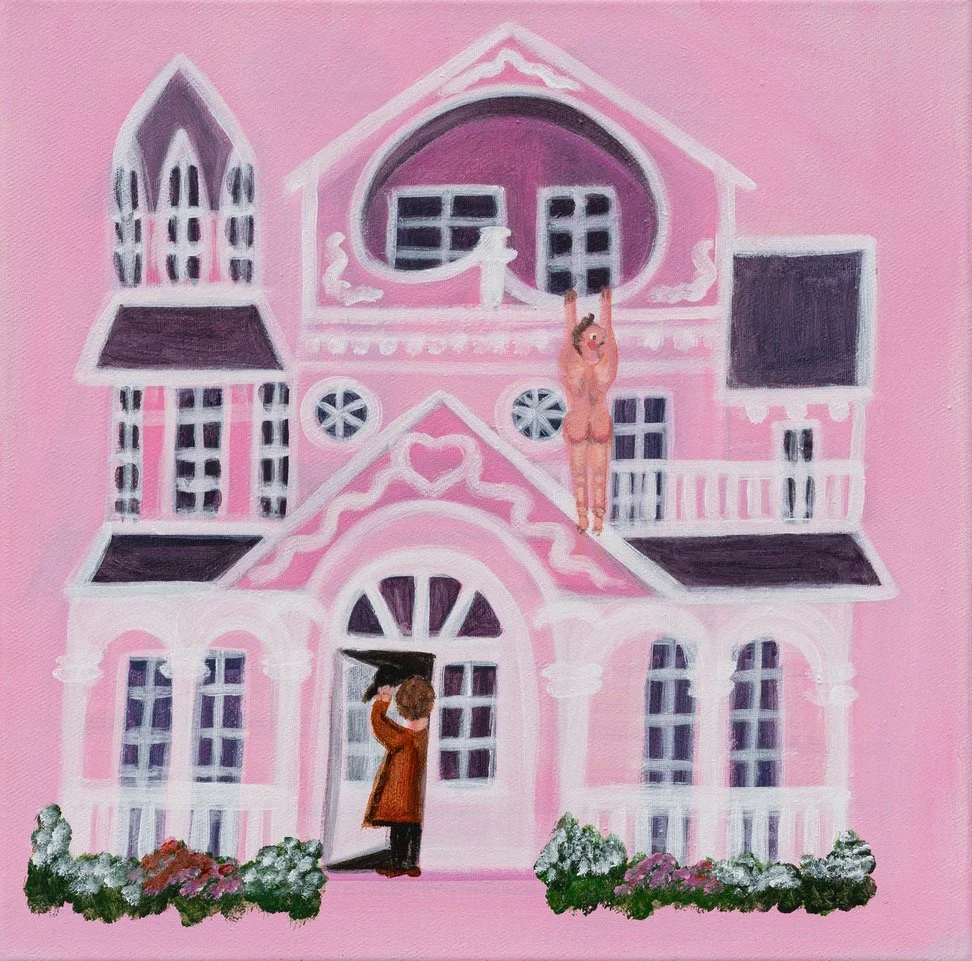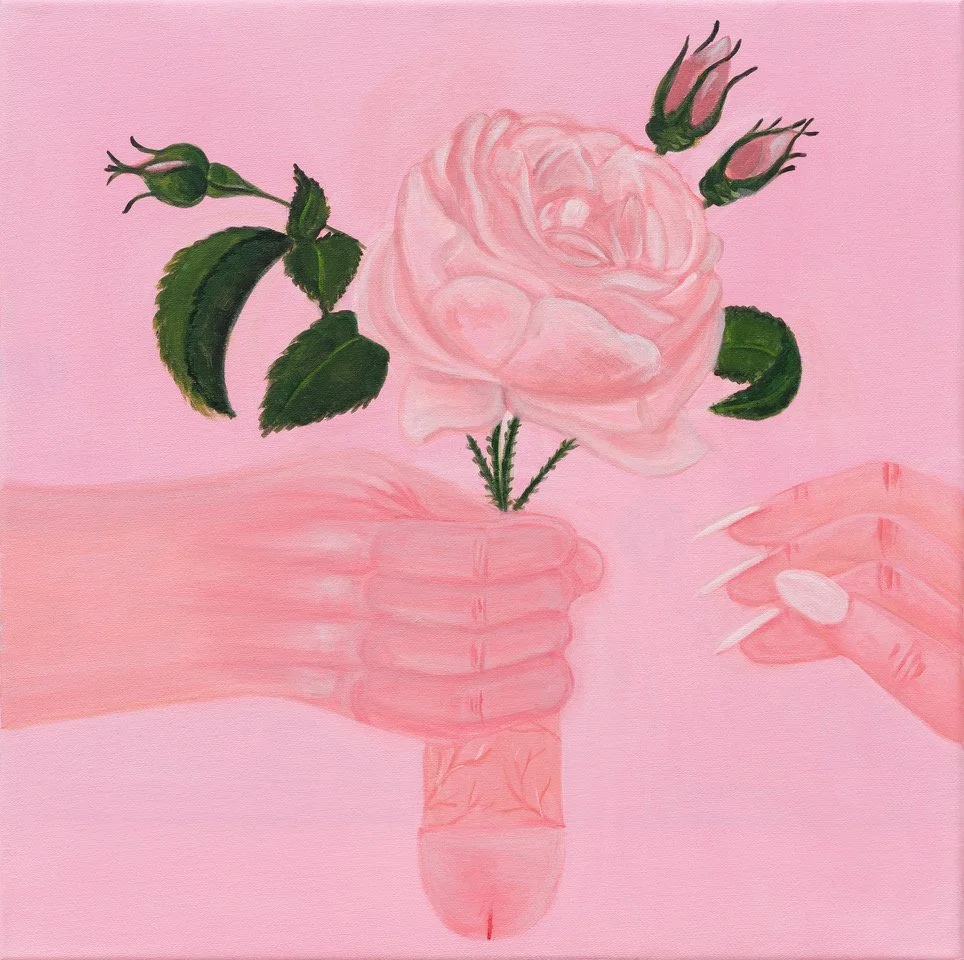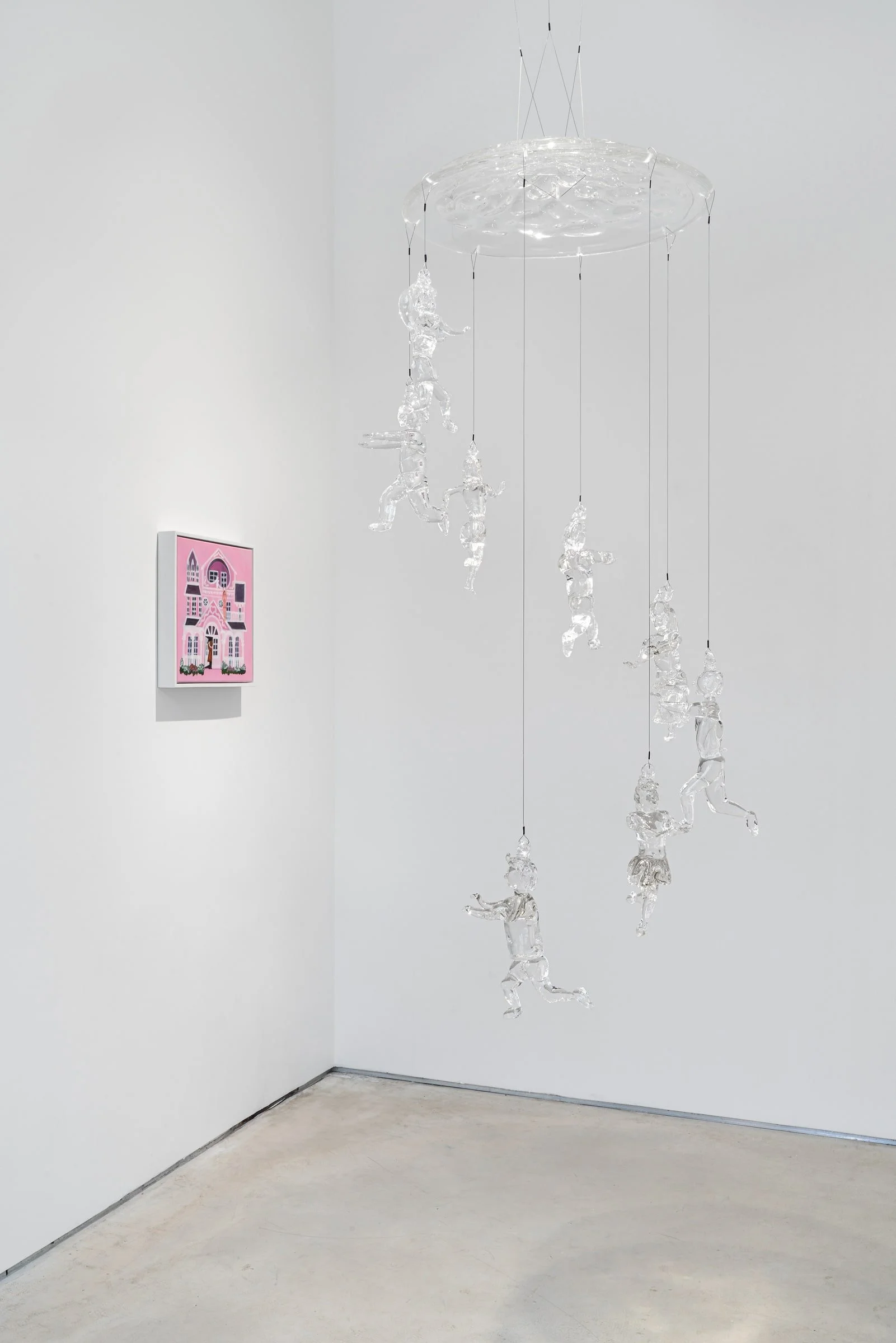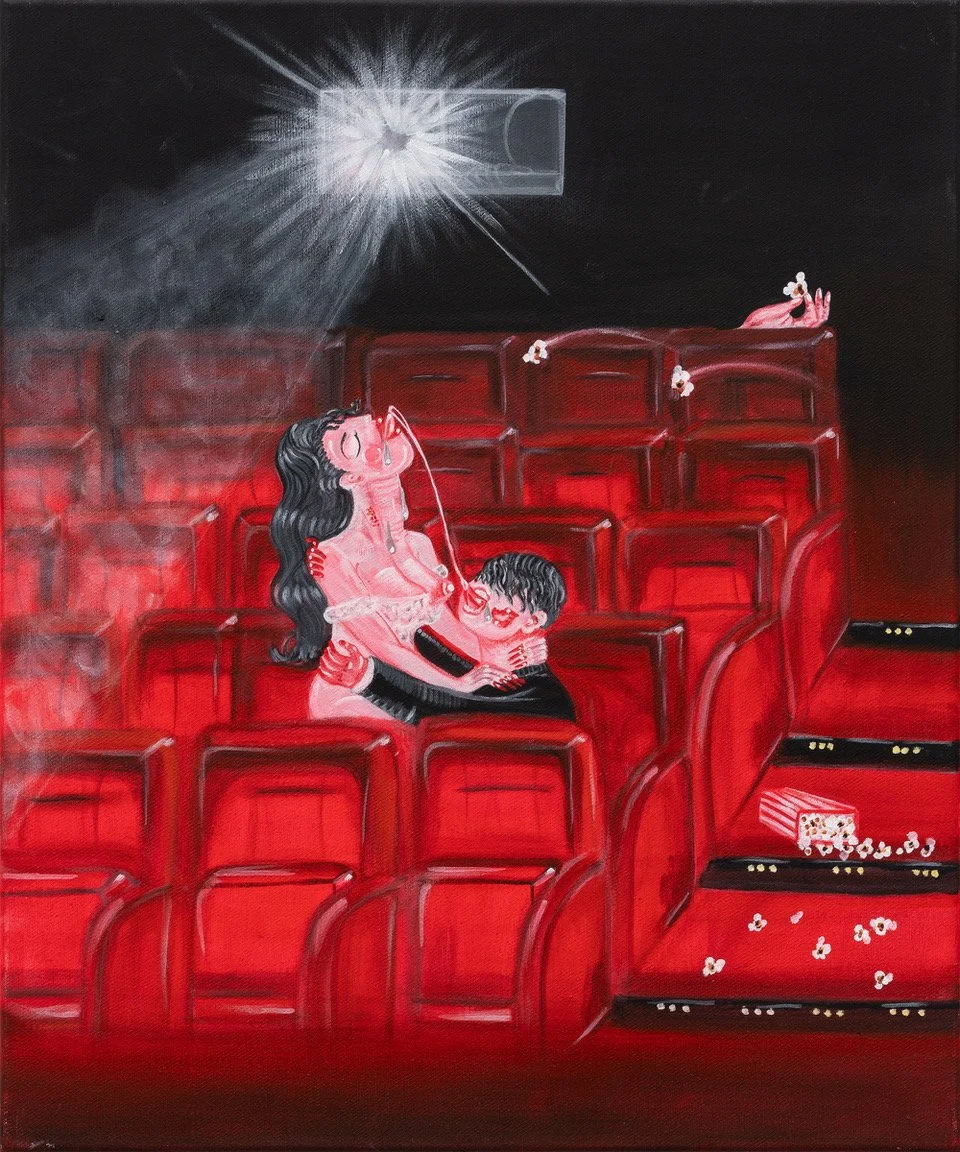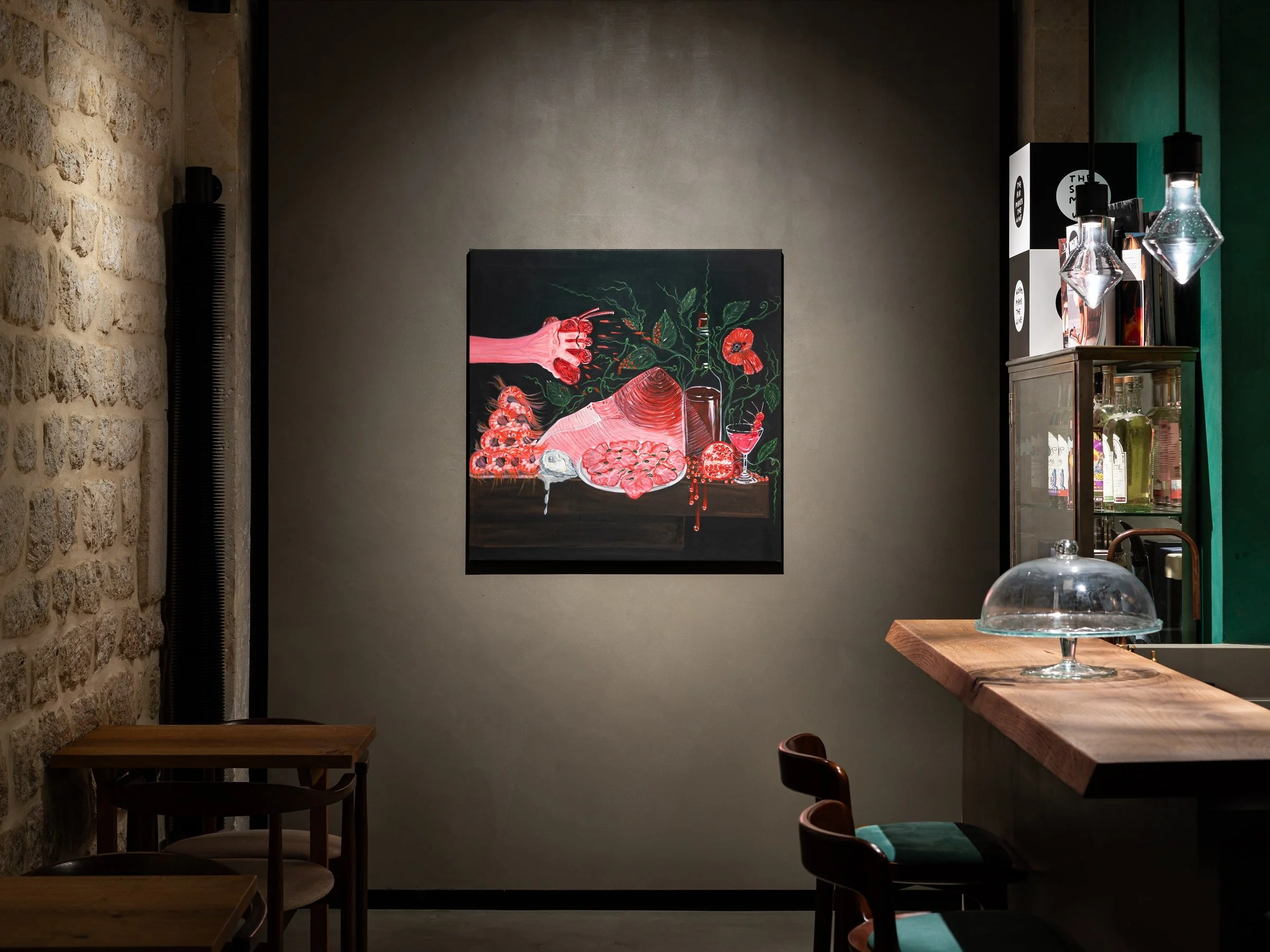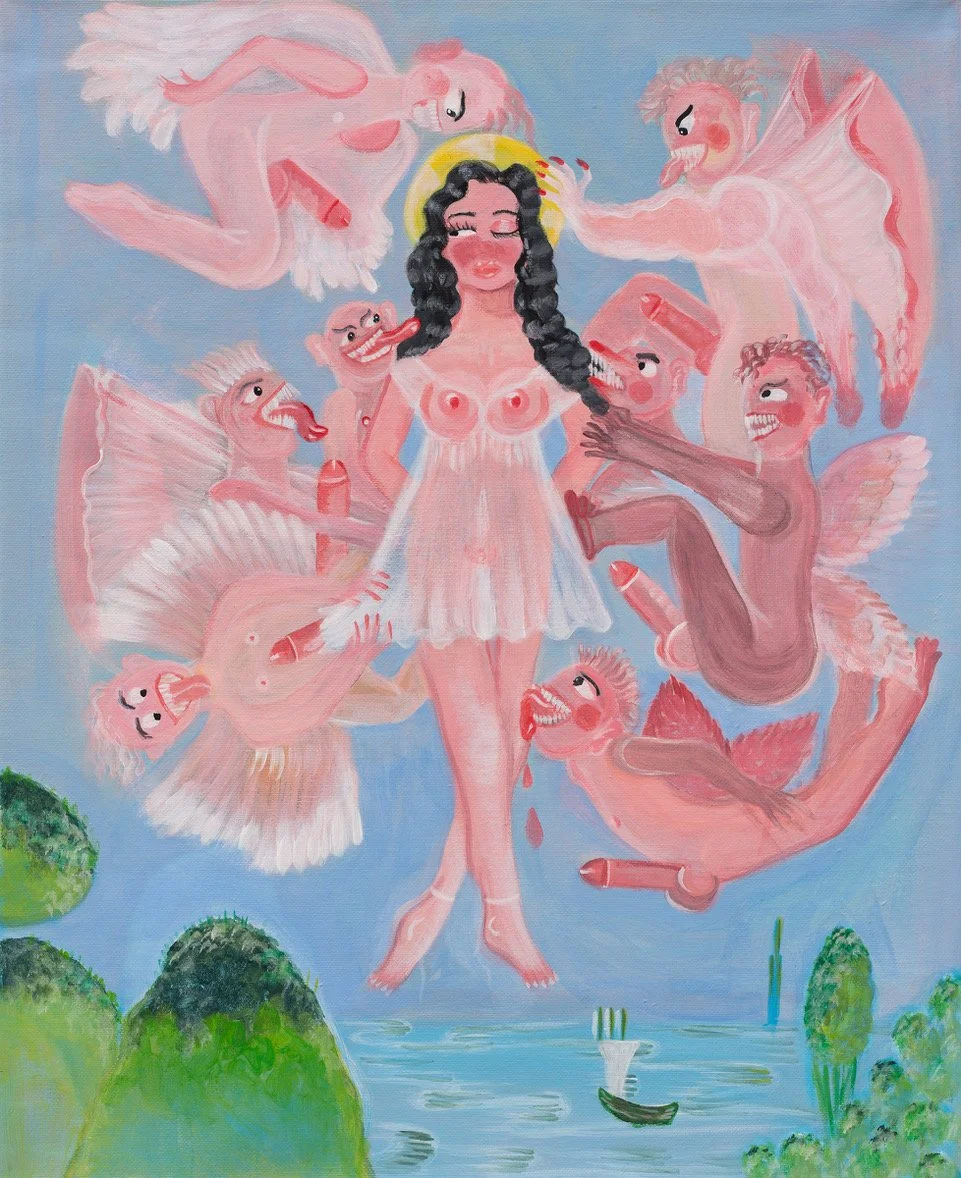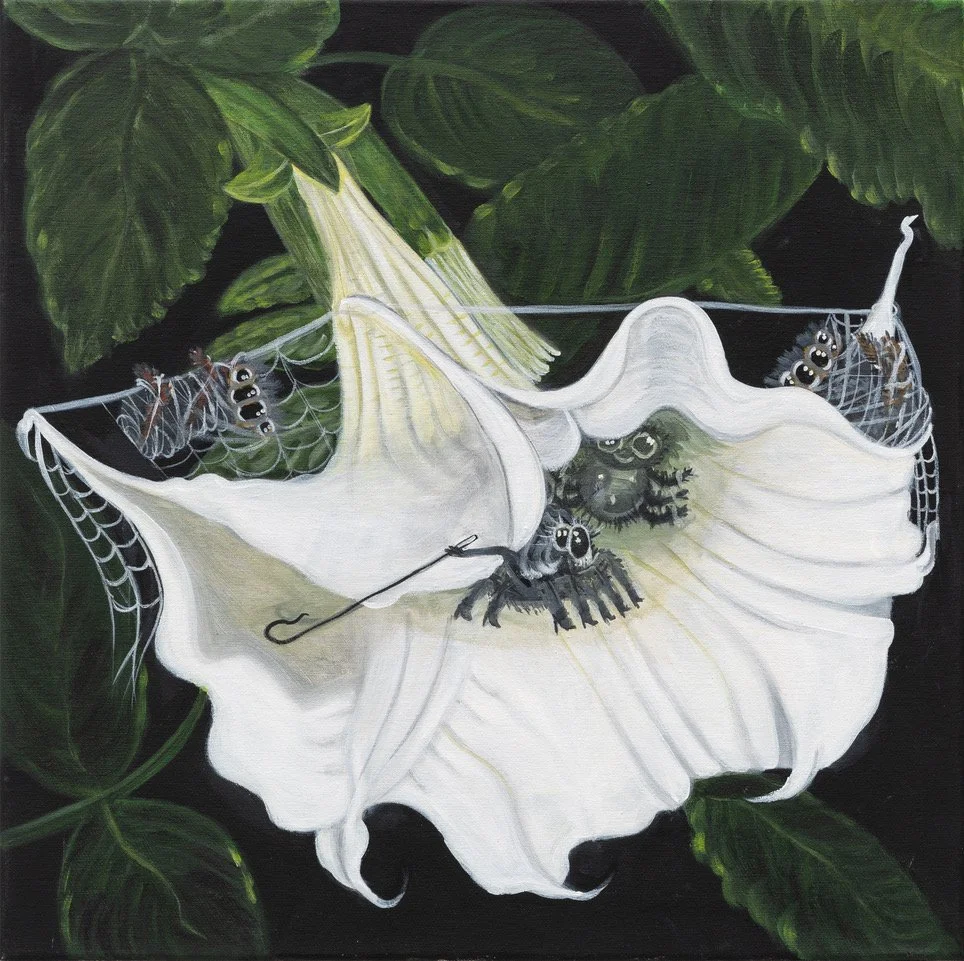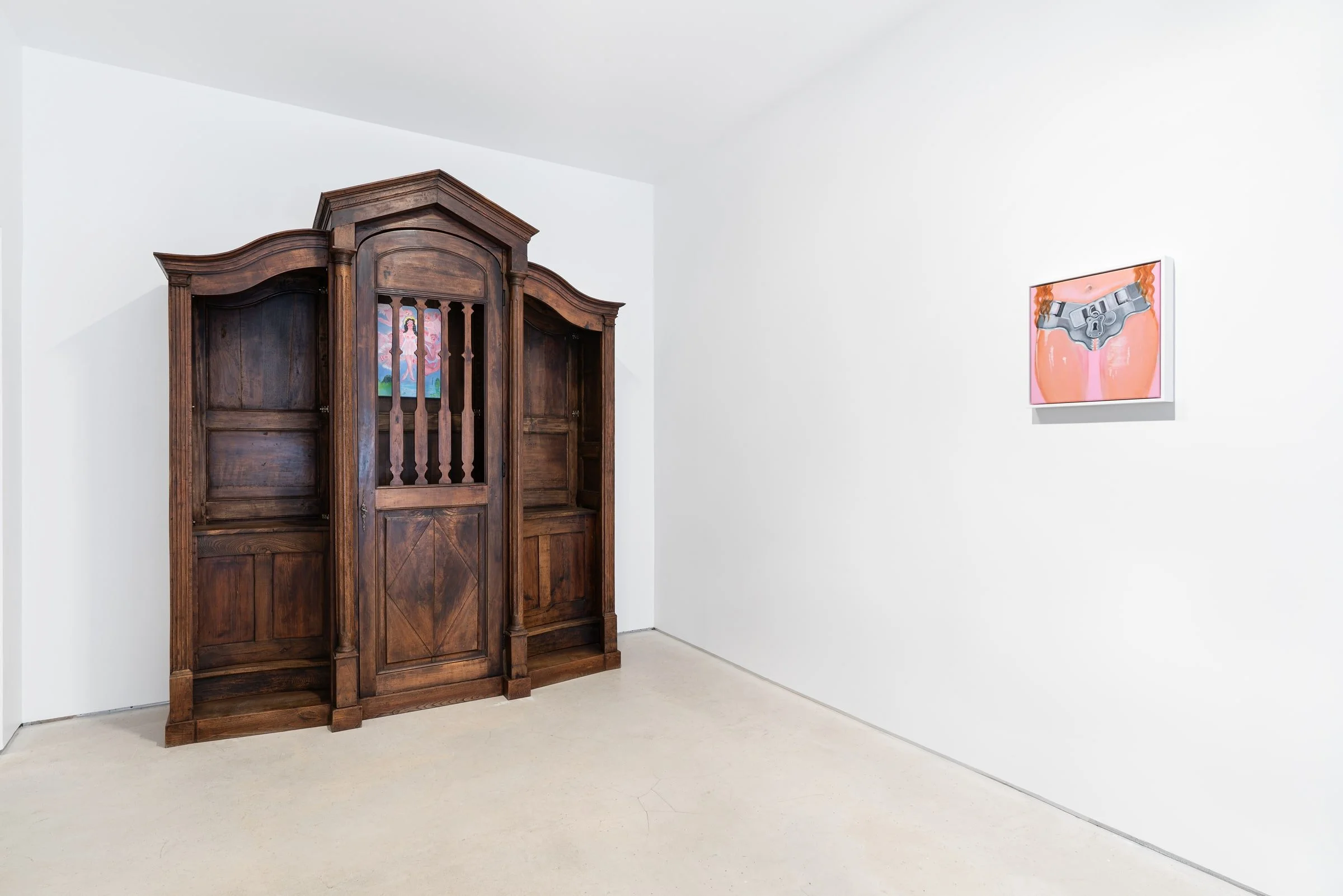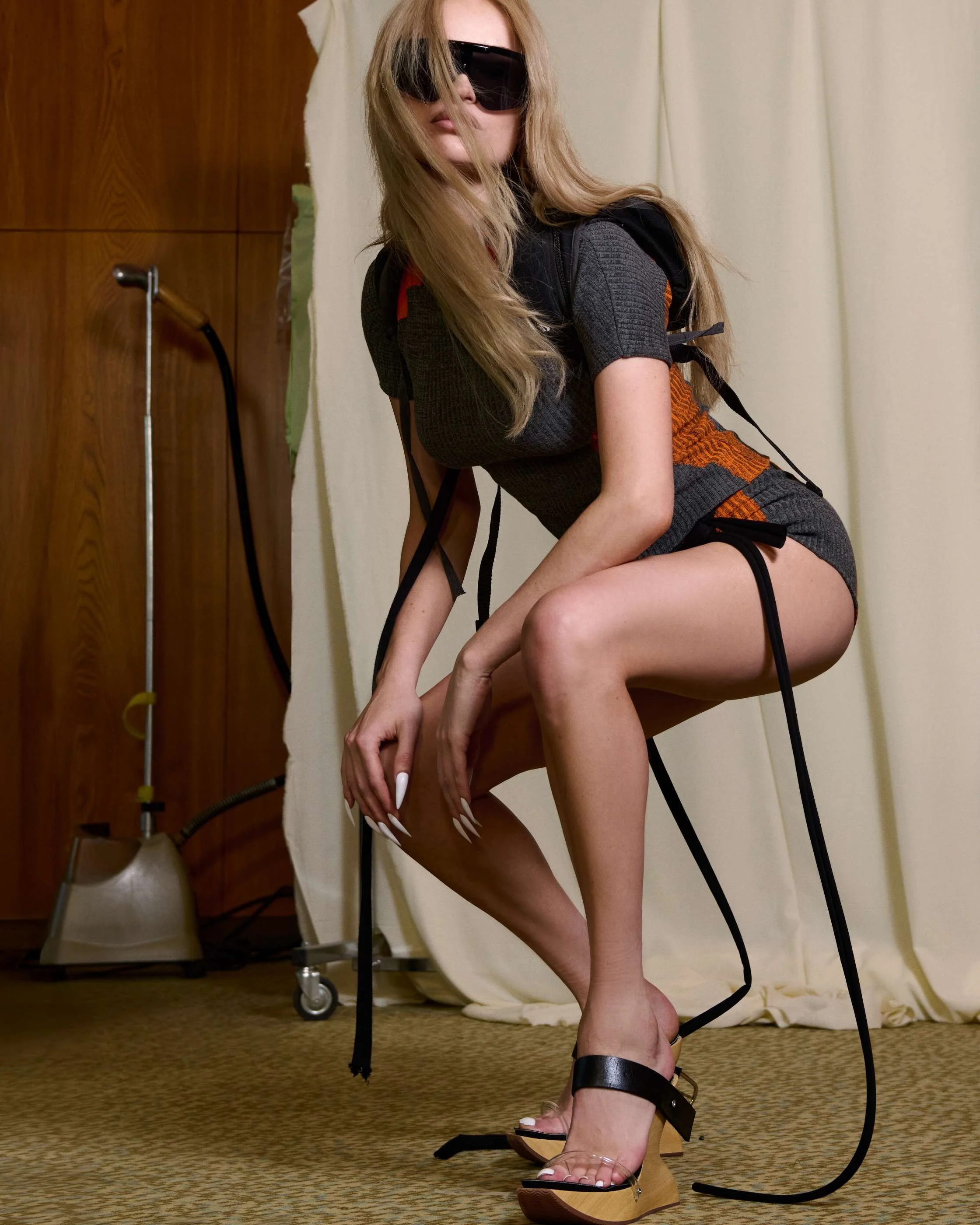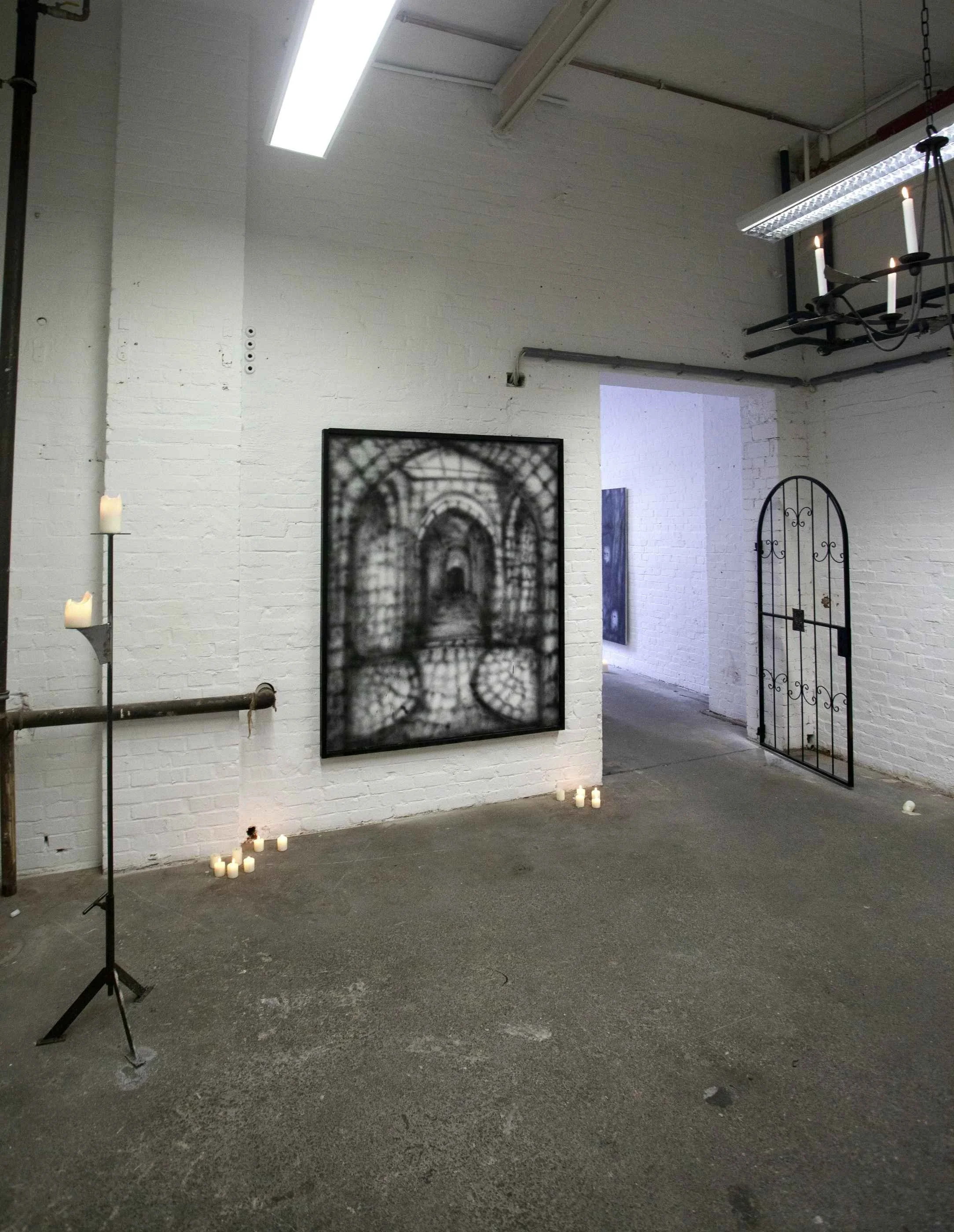Oh de Laval
There’s something immediately recognizable about Oh de Laval’s work, not just in its bold colors or raw intimacy, but in the way it seems to speak a private language. Her paintings are unapologetically emotional, often seductive, sometimes disorienting, but never passive. They don't ask for permission, and they don’t ask for approval. They exist in their own logic: where sweetness can sting, and softness might hide something sharp.
Her latest exhibition, I Miss When People Had Secrets, continues this trajectory: visually direct, emotionally charged, and quietly provocative. Rather than loud statements, it offers fragments, memories, and moments that might mean different things depending on who’s looking. What remains consistent is her voice: self-contained, fiercely independent, and completely her own.
What follows is a conversation that doesn’t try to explain everything. It offers a few glimpses, some thoughts, and maybe even a secret or two, if you read closely.
I wanted to start with your name: Oh de Laval. What’s the story behind it? Did it come from something personal, or was it more of an instinctive choice?
There’s no exciting story behind my name. I wanted to create a name that resonates only with me. When you think Oh de Laval, you think about me and my paintings — that was my goal.
Your paintings often mix religious imagery with themes that feel intimate and raw. Do you think about that contrast while you’re working, or does it just sort of happen as the piece develops?
I planned it but then while painting I let things develop in their time and way.
“I have no impact on how people look or interact with my art at the end. People look at art through themselves and they see only who they are.”
Your current exhibition is titled “I Miss When People Had Secrets”. It’s such a specific and loaded phrase. Where did it come from, and what does it mean to you in relation to the paintings?
I find this sentence very common in a way how people feel currently.
It comes from what surrounds us, I think the title of the show is so provocative in the “influencer” era, when people love to reveal their locations, with who they are and what they are doing.
I prefer to not explain it any more and let the viewer find the interconnection of the title with the works I’m presenting in this show.
In this show, you’re presenting your work in some new formats, like the confessional. What made you want to change how people look at and interact with your paintings?
I have no impact on how people look or interact with my art at the end. People look at art through themselves and they see only who they are.
Confessional is there as an object deeply related to the theme of secrets but taken out of the church — it’s a furniture but still carries years of secrets between the wood.
There’s a dialogue in your paintings between a kind of visual innocence, bright colors, naïve forms, and much darker or more complex subject matter. How do you approach that contrast as a narrative or emotional device?
I am very against people calling my art naïve. I don’t find anything naïve in my art, whether it’s my current style or the subject. I would say it’s a mix of Disney World (on whose stories I was raised) with reality of life.
To me, my paintings and my sculptures are about emotional issues that I choose to serve to the viewer in a very sweet sugarcoat package.
Do you feel that eroticism in contemporary art is becoming sanitized or commodified? If so, what do you think is being lost in that process, and what are you hoping to reclaim through your own work?
In my opinion, eroticism, nudity or sex in the art world is treated nowadays as “less of an art,” a worst kind of art.
I don’t hope to reclaim anything, I just express myself, and sometimes my paintings are very sexual but often not at all and it’s just viewer imagination.
Interview by CLAIRE H.
What to read next

